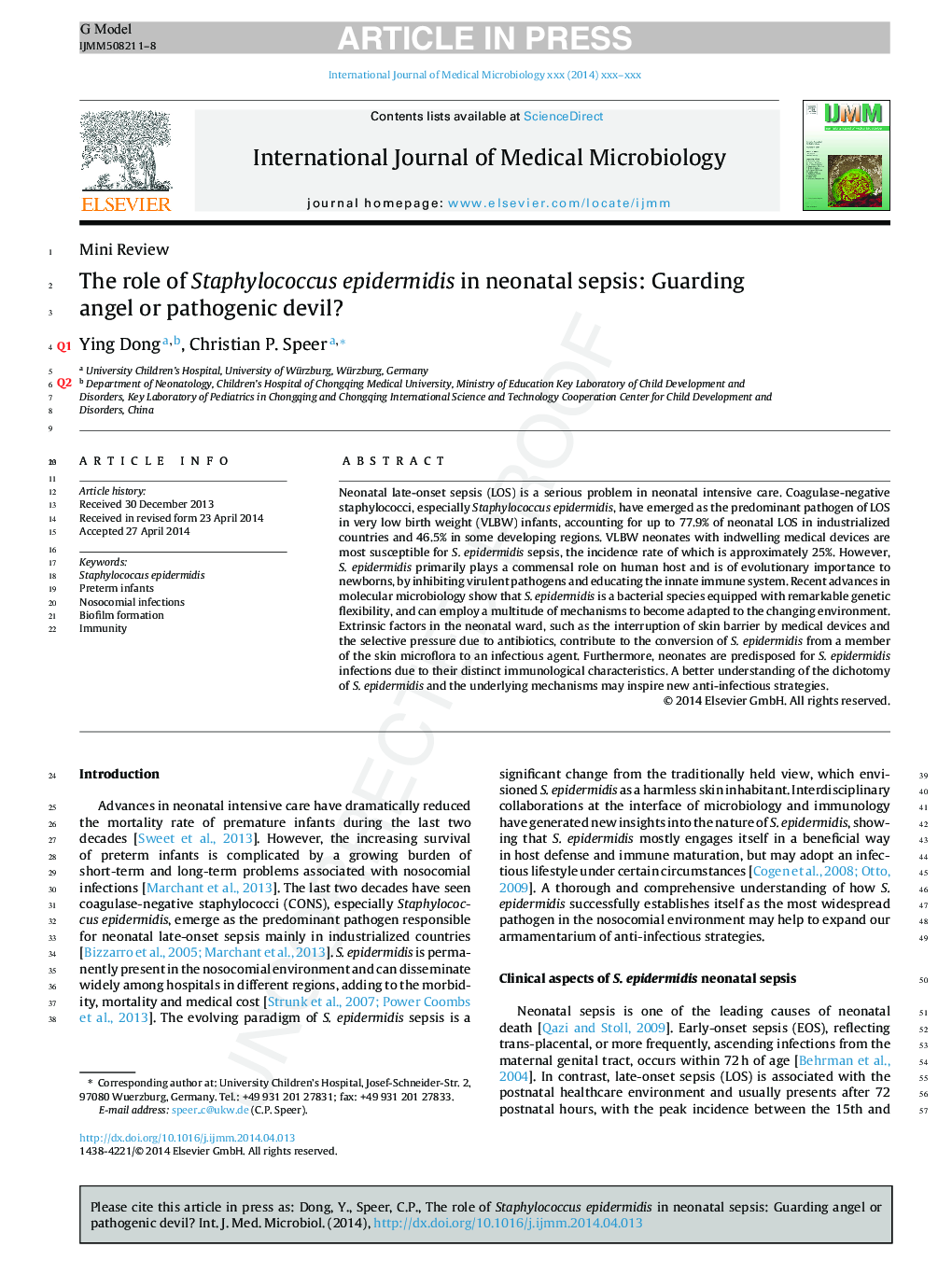| کد مقاله | کد نشریه | سال انتشار | مقاله انگلیسی | نسخه تمام متن |
|---|---|---|---|---|
| 8385511 | 1543694 | 2014 | 8 صفحه PDF | دانلود رایگان |
عنوان انگلیسی مقاله ISI
The role of Staphylococcus epidermidis in neonatal sepsis: Guarding angel or pathogenic devil?
ترجمه فارسی عنوان
نقش استافیلوکوک اپیدرمیدیس در سپسیس نوزادان: نگهبان فرشته یا شیطان پاتوژن؟
دانلود مقاله + سفارش ترجمه
دانلود مقاله ISI انگلیسی
رایگان برای ایرانیان
کلمات کلیدی
موضوعات مرتبط
علوم زیستی و بیوفناوری
بیوشیمی، ژنتیک و زیست شناسی مولکولی
بیوشیمی، ژنتیک و زیست شناسی مولکولی (عمومی)
چکیده انگلیسی
Neonatal late-onset sepsis (LOS) is a serious problem in neonatal intensive care. Coagulase-negative staphylococci, especially Staphylococcus epidermidis, have emerged as the predominant pathogen of LOS in very low birth weight (VLBW) infants, accounting for up to 77.9% of neonatal LOS in industrialized countries and 46.5% in some developing regions. VLBW neonates with indwelling medical devices are most susceptible for S. epidermidis sepsis, the incidence rate of which is approximately 25%. However, S. epidermidis primarily plays a commensal role on human host and is of evolutionary importance to newborns, by inhibiting virulent pathogens and educating the innate immune system. Recent advances in molecular microbiology show that S. epidermidis is a bacterial species equipped with remarkable genetic flexibility, and can employ a multitude of mechanisms to become adapted to the changing environment. Extrinsic factors in the neonatal ward, such as the interruption of skin barrier by medical devices and the selective pressure due to antibiotics, contribute to the conversion of S. epidermidis from a member of the skin microflora to an infectious agent. Furthermore, neonates are predisposed for S. epidermidis infections due to their distinct immunological characteristics. A better understanding of the dichotomy of S. epidermidis and the underlying mechanisms may inspire new anti-infectious strategies.
ناشر
Database: Elsevier - ScienceDirect (ساینس دایرکت)
Journal: International Journal of Medical Microbiology - Volume 304, Issues 5â6, July 2014, Pages 513-520
Journal: International Journal of Medical Microbiology - Volume 304, Issues 5â6, July 2014, Pages 513-520
نویسندگان
Ying Dong, Christian P. Speer,
